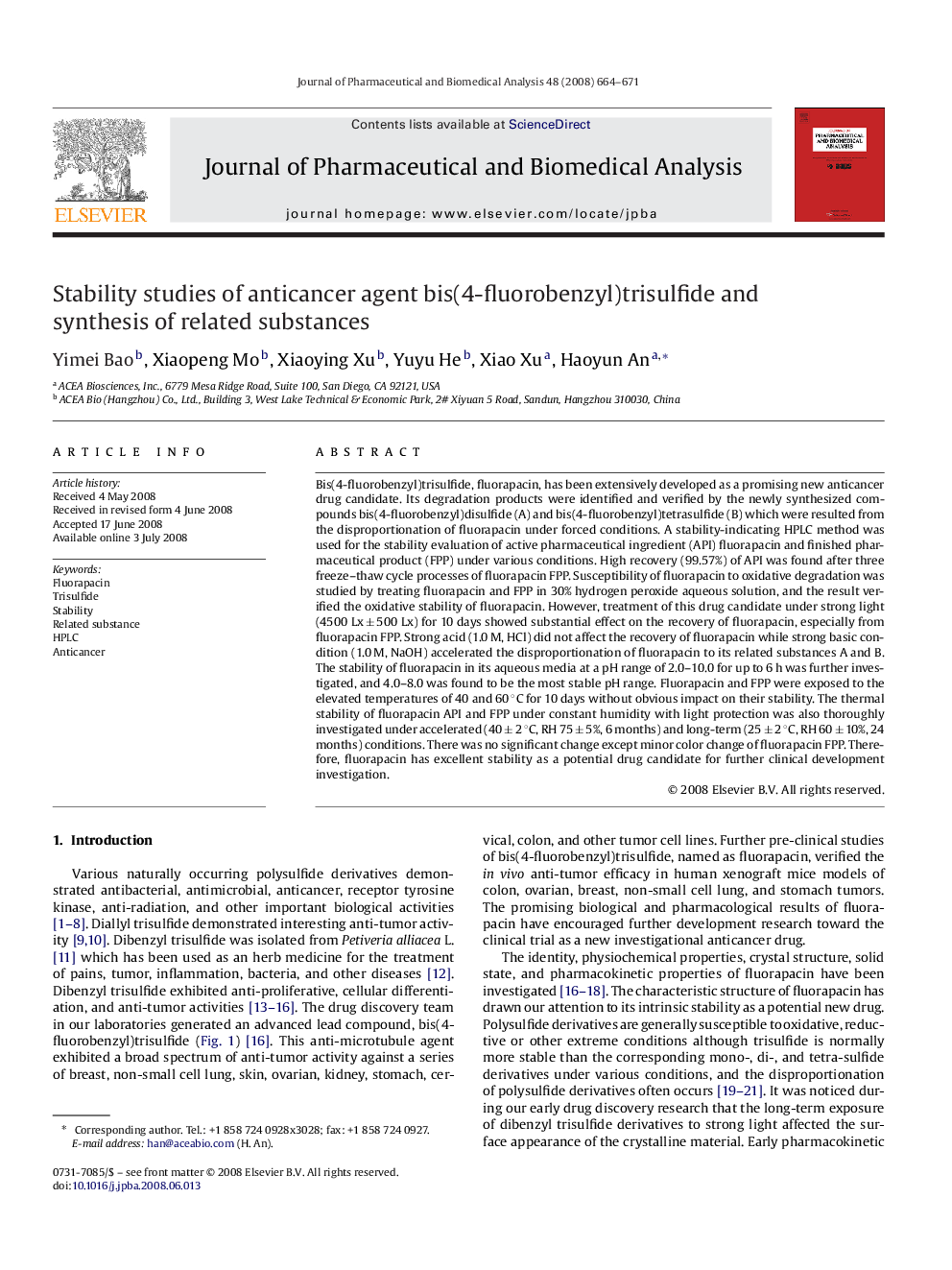| Article ID | Journal | Published Year | Pages | File Type |
|---|---|---|---|---|
| 1222778 | Journal of Pharmaceutical and Biomedical Analysis | 2008 | 8 Pages |
Bis(4-fluorobenzyl)trisulfide, fluorapacin, has been extensively developed as a promising new anticancer drug candidate. Its degradation products were identified and verified by the newly synthesized compounds bis(4-fluorobenzyl)disulfide (A) and bis(4-fluorobenzyl)tetrasulfide (B) which were resulted from the disproportionation of fluorapacin under forced conditions. A stability-indicating HPLC method was used for the stability evaluation of active pharmaceutical ingredient (API) fluorapacin and finished pharmaceutical product (FPP) under various conditions. High recovery (99.57%) of API was found after three freeze–thaw cycle processes of fluorapacin FPP. Susceptibility of fluorapacin to oxidative degradation was studied by treating fluorapacin and FPP in 30% hydrogen peroxide aqueous solution, and the result verified the oxidative stability of fluorapacin. However, treatment of this drug candidate under strong light (4500 Lx ± 500 Lx) for 10 days showed substantial effect on the recovery of fluorapacin, especially from fluorapacin FPP. Strong acid (1.0 M, HCl) did not affect the recovery of fluorapacin while strong basic condition (1.0 M, NaOH) accelerated the disproportionation of fluorapacin to its related substances A and B. The stability of fluorapacin in its aqueous media at a pH range of 2.0–10.0 for up to 6 h was further investigated, and 4.0–8.0 was found to be the most stable pH range. Fluorapacin and FPP were exposed to the elevated temperatures of 40 and 60 °C for 10 days without obvious impact on their stability. The thermal stability of fluorapacin API and FPP under constant humidity with light protection was also thoroughly investigated under accelerated (40 ± 2 °C, RH 75 ± 5%, 6 months) and long-term (25 ± 2 °C, RH 60 ± 10%, 24 months) conditions. There was no significant change except minor color change of fluorapacin FPP. Therefore, fluorapacin has excellent stability as a potential drug candidate for further clinical development investigation.
